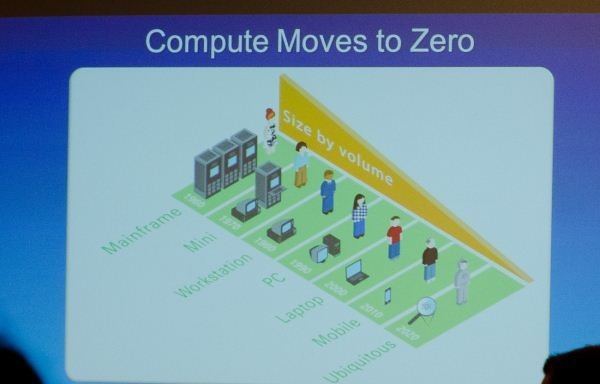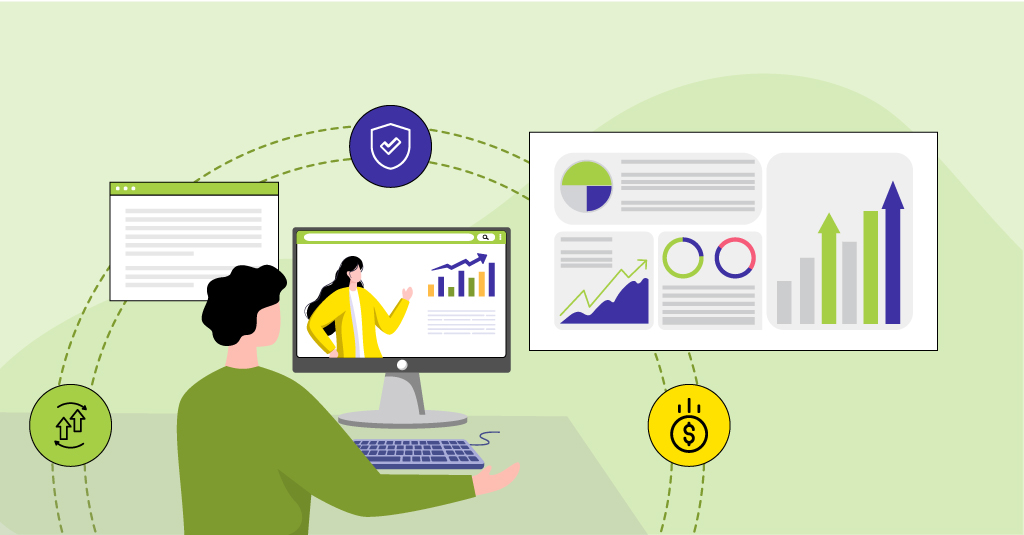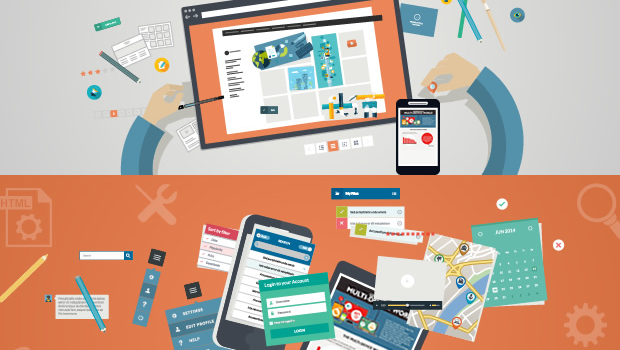We struggle to come to terms with the volumes of information that stream past us each day. More and more, we depend on digital agents to help us navigate that ‘data stream’ and glean information from it, and then to make sense of it. These digital agents can be looked at simply as computer programs that are connected to the information resources of the inter-webs, they could reside on your mobile phone as an application or accessed as one might a ‘cloud service’. The agent might even be distributed across varied computing platforms accessing multiple resources. The point is that we already live in a world of disembodied agents; they are only going to become more common. We already depend and trust them for a variety of activities that once required human intervention.
Yesterday, I read something along the lines of “the size of meaningful computational power approaches zero…” the article points to various trends on the hardware side of computing. They had an interesting graphic, which I have taken the liberty of reproducing here. This further led me to a great article on ReadWriteWeb – In the words of the Intel Futurist Rob Johnson – in 2020, however, “something remarkable happens,” Johnson writes. “As we pass 2020, the size of meaningful computational power approaches zero.” In other words, with a microprocessor that small, you can put a computer in just about anything. “When you get intelligence that small, you can turn anything into a computer,” Johnson writes. “You could turn a table into a computer. All of a sudden, it’s possible to turn your shirt, your chair, even your own body into a computer.”

My instant reaction when I saw the graphic was – we are now currently entering the mobile learning phase, will an ‘ubiquitous’ learning phase be next. It is hard to imagine the implications of being able to embed a tiny fully functional networked computer into pretty much anything we desire. Couple semantic agents that can make sense of ‘big data’ streams with fully functional computers that can sense their environment (sensors like mobile phones), communicate with other agents/computers, and take action on that basis – the possibilities are endless.
What would ubiquitous learning look like? Well, there isn’t an easy answer to that. It is hard to foresee what will come about personal computing technologies in the next decade. In my eyes, from a learning perspective, there are a few key themes:
- Discovery and delivery – the ability to use agents that comprehend context, are able to make ‘coherent’ sense of varied data streams to search for information, discover, and provide content – just in time, in the correct context and in the appropriate format.
- Machine to Machine communication – While there is no doubt that this will happen, and that the ‘internet of things’ isn’t very far away in the future. One thing I found fascinating is the idea that you could create a ‘learning profile’, an identity that is essentially a digital package of your learning preferences and the contents of your past learning, that can be accessed by machines. This would let the ‘machine’ actually tailor its user interfaces, learning content and the experience itself, and present information in a way that suits the preferences of the human.
- Embedded learning – networked learning that is built into every device, every tool, every physical resource humans use; there is no need for specific training; the latest information is available just in time, from authentic sources, judged valuable by network analysis, provided with the right context and assists humans to complete tasks
How this will impact learning is a big question? Are we moving to a world where only learning of the higher orders will be necessary? Will we reach a point where humans learn simply because they have to? Xira makes a cutting comment on the ReadWriteWeb article ‘Education is meaningless (but worthwhile?) when a computer can do anything you can do for nothing.’ Will this scenario really materialize?
From a formal learning approach where knowledge and skills are acquired through blended learning, to a technology enabled extended learning approach where the time required to achieve competence is reduced as compared to formal learning, we are now slowly moving to an ‘embedded ubiquitous’ approach where learning is embedded with the work, and is provided just at the time of task execution, just enough to accomplish the task at hand. Mobile devices and technology are the first wave in technology that supports this type of learning; it only gets better from here.



















